Is celery an annual or perennial vegetable?
One of the most useful plants in the garden - celery... A guest who came to us from the Mediterranean has now firmly settled in our gardens thanks to the aroma, useful qualities and ease of cultivation. As you know, a vegetable is not only a food product, but also has medicinal properties.
Content:
- Description of the vegetable
- Composition and useful properties
- Types and varieties
- Growing leaf celery
- Growing root celery
- Growing stalked celery
- Diseases and pests
- Celery application
Description of the vegetable
Celery is a biennial or perennial plant of the Umbrella family. There are about 20 types of this vegetable crop in the world, but only a few are the most popular.
In our country, mainly two-year-old celery is bred, because already in the first year of cultivation, the plant forms a rosette of dark green smooth leaves.
Depending on the variety, a root crop or root develops.
The next year, the vegetable crop grows leaves in March and forms a straight trunk up to a meter high. To this, an umbrella inflorescence develops. So already in July, celery blooms and forms seeds, and then dies.
Perennial celery is called lovage. It is easier to grow because it does not need to be planted in the ground every time. Once sown and can be enjoyed for several years. It is frost-resistant and unpretentious, and also has a number of useful properties. So it can be consumed whole in food: from roots to leaves. And in any form: from fresh to boiled.
The composition and useful properties of celery
This vegetable crop is very rich in vitamins, proteins and minerals. The amino acids in celery - carotene and tyrosine - help relieve tension and stress. They say that nutrients in the culture slow down the aging process, so this product is recommended for elderly people.
B vitamins, vitamin E and ascorbic acid normalize the body's work, the use of celery improves immunity and is the prevention of cardiovascular diseases. So the constant addition of vegetables to your diet helps to increase the level of hemoglobin due to its high iron content. Magnesium and calcium, both of which are abundant in the plant, help reduce stress levels and make bones stronger.
100 grams of peeled celery accounts for:
- 320 mg potassium
- 68 mg calcium
- 80 mg phosphorus
- 9 mg magnesium
- 0.5 mg iron
- 0.3 mg zinc
Celery is considered a good remedy that can help with conditions such as:
- Rheumatism
- Renal failure
- Gout
- It is advised to use for patients with diabetes mellitus.
A distinctive feature of this product is diuretic. The plant helps in the presence of genitourinary problems, as well as kidney and liver diseases.
Types and varieties of celery
There are three types of this vegetable - leaf, petiole and root. Each has its own advantages:
- The leafy appearance makes it possible to obtain green and succulent foliage.They can be left on throughout the spring and summer. Popular varieties: Gentle, Kartuli, Zakhar.
- Petiolate celery requires a certain skill, therefore it is grown by experienced summer residents. You can even get alcoholic drinks from it. Popular varieties: Junga, Malachite, Gold.
- And here root ideal for growing on your own. Both tuber and greens are suitable for consumption. In a good year, up to 800 g of roots can be obtained from one fruit. Popular varieties: Maxim, Diamant, Apple.
Depending on individual preferences, the summer resident can choose any of the varieties he likes. Only if he prefers stalked celery, he will have to be patient to breed it.
All plant species prefer quiet places with plenty of light and nutrient-rich soil.
However, when growing conditions change, for example, the presence of partial shade or an increased level soil acidity, the harvest will not be less. Celery adapts and the smell of leaves may change on the way out.
The growing season of a vegetable is at least 180 days. And although celery is considered a fairly cold-resistant plant, it is difficult to provide it with the necessary weather conditions for a long time. Therefore, its reproduction is best carried out by seedlings. To prepare the seeds, you need to soak them first in a weak solution with potassium permanganate. After that, lay out on a cloth and put on a windowsill so that the seeds germinate a little. After that, they are ready to be placed in the ground.
Growing leaf celery
The best soil for growing a leafy species is considered to be a soil of sand, leafy earth, humus and peat. All components are mixed equally to one. In the early days of spring, it is already necessary to plant seeds in the ground.
For this, it is best to take a wooden pot or box in which you place the appropriate soil. Next, you need to take the seeds and plant them not deeply, pressing them with your fingers. Sprinkle a little peat on top. This box must be placed in a warm, bright place with a stable temperature of 18-20 ° C. A week later, when the seeds sprout, the temperature will need to be reduced to 15 ° C.
Seedling care:
- The soil should be damp for the first two weeks. To do this, you should regularly water the seedlings through a sieve. But it is important to make sure that no puddles form. It is also impossible to fill the plant.
- When the sprouts give 1-2 leaves, you can safely carry out dive... Each plant needs a little space, so you can plant up to 4-5 sprouts in one half-liter plastic cup. When diving leaf celery, you need to not only transplant seedlings, but also pinch the root. This makes the seedlings stronger.
It is necessary to transplant into open soil in early May. The distance between the seedlings is 25 cm. It is important not to bury the seedlings strongly in the ground, otherwise they will not grow and wither. It is worth carrying out systematic watering and periodically loosen the ground. If you adhere to the correct technology, then in the middle of summer you can collect.
Growing root celery
This species stands out for its long growing season, so it is important to start preparing seedlings not in early March, but in early February. For the rest, the cultivation of seeds is similar to the previous conditions.
Care immediately after transplanting into the ground should be systematic and vigilant. So, it is important to carry out frequent replenishment with water and regularly loosen the soil, well, after each watering. It is necessary to uproot the weeds that form around the vegetable, they can take away the nutrients the plant needs.
Already in the middle of autumn, you need to start directly harvesting celery root.
Important! In no case should you spud root celery! This can affect the quality of the vegetable. Alternatively, you can remove the top layer of soil from the top of the root crop.
Note that you can pick off the leaves as the celery grows, but it's best not to. Three weeks before harvest, you can begin to carry out this procedure, and also remove the soil from the root crop even more.
Growing stalked celery
Growing seeds of this species is identical to growing leaf celery. However, there are differences in the care of seedlings outdoors. Celery should be planted much deeper - the grooves should be up to 10 cm. It is important not to sprinkle the top bud with earth, but after a while, hilling it.
You need to harvest the crop before the first frost.
An interesting way is to whiten the roots. Two weeks before harvesting the celery, you can tie the stalks and wrap them in paper. This will make the vegetable more tender and sweet.
Pests and diseases
Although celery is a simple and unpretentious crop, in the absence of proper care, the plant can get sick and even die very quickly. The main hazards for the vegetable:
- Cercosporosis is a disease that affects the upper layers of a plant. A distinctive feature is that spots appear with smooth edges, often of a purple or brown hue. Often occurs in damp and cool weather. It is necessary to treat cercosporosis with Fundazole solution. To do this, you need to spray the plant no later than three weeks before harvesting.
- Powdery mildew affects the whole plant. This is a white coating on the leaves, which leads to rotting of the plant.
- Rust - manifests itself as characteristic lesions on the leaves of the plant and leads to its drying out. Usually affects the vegetable in early summer. To prevent the onset of the disease, you need to spray the plant with Baktofit.
- Cucumber mosaic is a viral disease that slows down the growth of a vegetable. A characteristic feature is the appearance of rings in the upper part of the plant. It is impossible to cure damaged celery, but you can destroy the pests that carry the cucumber mosaic.
The plant can be destroyed not only by diseases, but also by pests. These include:
- Celery fly - harmful in that it lays eggs under the skin of the leaves, from which the larvae appear. These larvae eat the plant and it dries up. To prevent the pest from penetrating the vegetable, you need to regularly destroy the weeds around and carry out chemical treatments.
- Carrot flies are a pest that infects leaves by sucking juice out of them. Those curl up and the plant withers. To avoid the appearance of an insect on the plant, it is necessary to regularly loosen the ground.
- The leguminous aphid is distinguished by its high fertility. A new generation appears every two weeks. It is very easy to spot them - they are highlighted with black dots on a green sheet. To avoid the appearance of the bean aphid, you need to harvest on time. If the pest has just appeared, the plant should be sprayed with a decoction of yarrow or dandelion.
To minimize the risk of diseases and pests, it is necessary to properly carry out the procedures for sowing and transplanting seedlings. It is important to adhere to the watering schedule, and to spill the celery in a timely manner. Correct farming practices will help you get the best results and avoid trouble.
Celery application
In folk medicine, celery is actively used:
- In the treatment of ulcers, rheumatism and kidney disease. Freshly squeezed juice has a calming effect and is recommended for sleep disturbances and high stress levels.
- A decoction of a vegetable for gastritis and other diseases of the stomach should be taken with caution, because it increases the rate of secretion of gastric juice. 20 g of chopped vegetable must be poured with 2 cups of boiling water, kept on fire for 5-7 minutes, and then set aside. After the broth has been infused for 8 hours in a cool place, strain it. Drink 30 ml three times a day after meals.
- Celery is a hypoallergenic product that is used as a prophylactic product in case of an allergic reaction. To prepare the infusion, you need to take 2 tablespoons of the grated vegetable and pour a glass of water.You can take it two hours later, 5 tablespoons three times a day, 15 minutes before meals.
- If there is sand in the buds, you need to take a tablespoon of plant seeds, boil them in 100 ml of water for 10 minutes. Then pour 15 ml of honey into the broth. You need to take such an infusion 3-4 tablespoons before meals.
Celery Is an important vegetable that is rich in vitamins. It is easy to grow and can be used as a regular food or as a remedy.
More information about growing celery can be found in the video:



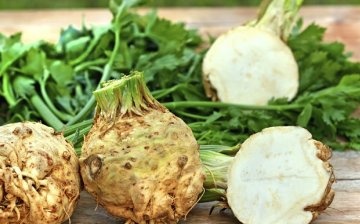
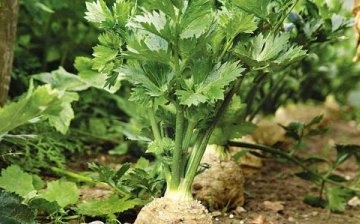
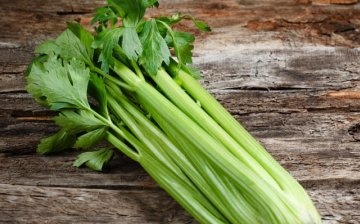
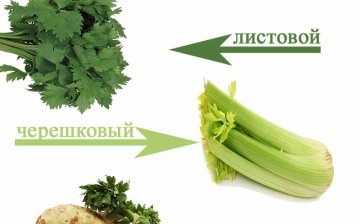
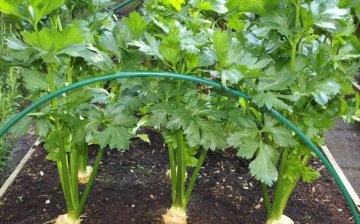
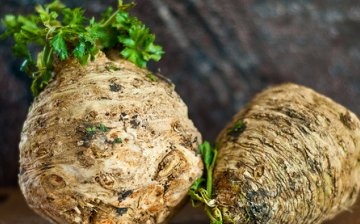
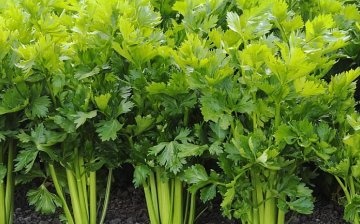
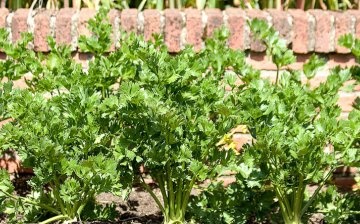
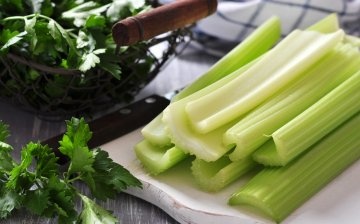










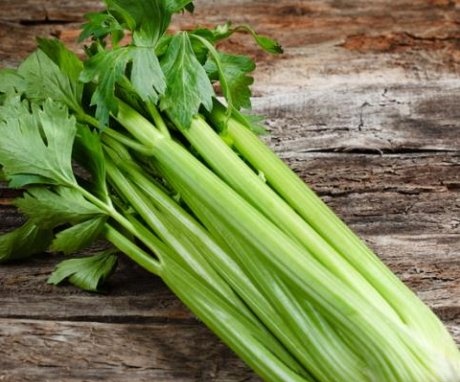
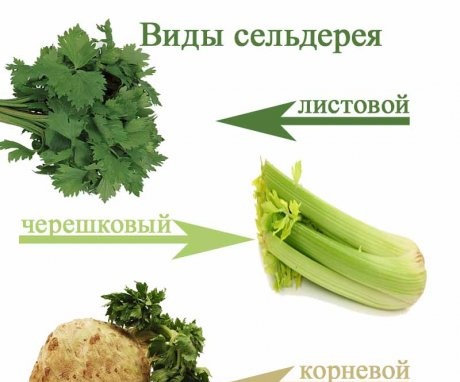
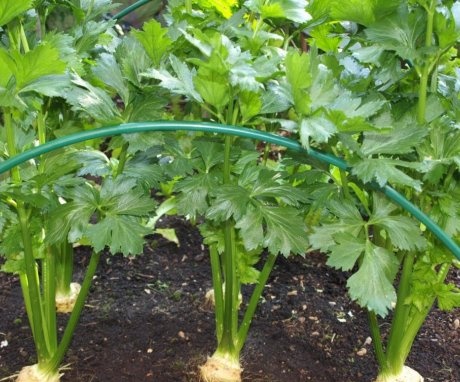
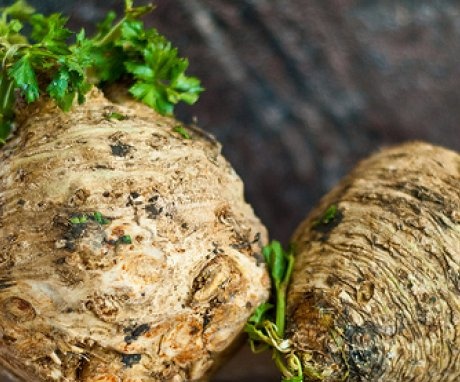

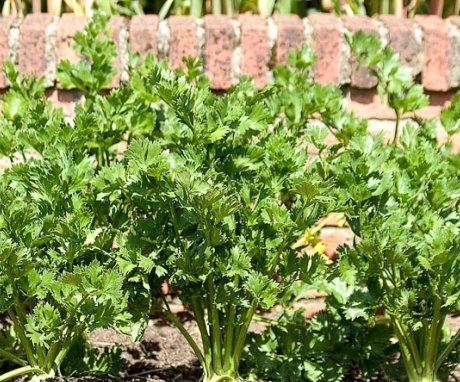
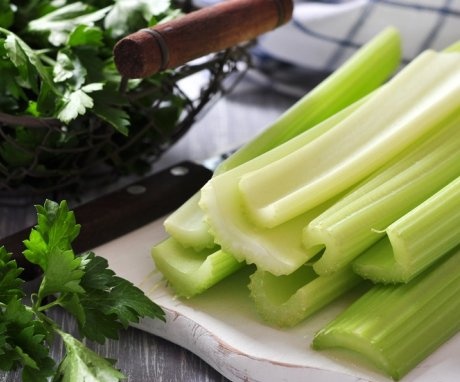
You see, if you start boiling or even just pour boiling water over grated celery, then in this case a significant part of the vitamins is destroyed. Still, I am a supporter of the use of fresh products.